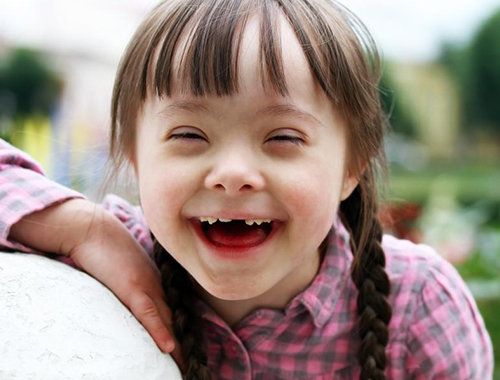Chapter 3. Common Genetic Diseases and Conditions
3.1 Synopsis
Welcome
Common Genetic Diseases
and Conditions
This activity examines several different types of genetic diseases and conditions.
Click the 'Get Started' button below to start this activity

3.2 Common Genetic Diseases and Conditions
Common Genetic Diseases and Conditions
Everyone carries alleles that could produce serious diseases or conditions in their offspring. Most such genes have no serious consequences because they are recessive. However, when the inherited condition is dominant, or when the zygote has received the recessive gene from both parents, the phenotype is affected.
Click on each condition to view its characteristics.
Go to list of Diseases


3.3 Common Genetic Diseases and Conditions
Common Genetic Diseases and Conditions

Question 3.1 Testing for genetic disorders during a pregnancy
pTfIzW4WMAYSemdKCtSqECejRDTqZOPni7aWVLHttE8uGSnPddT/wRoYFXnjcaA2s6geZgR9rtxZ7GuRJB8+wZKi2qGwsZ3BmEPrZXIT7FimHrDZArao2xC8avKHGZ/3mxm6jkQYqnGded25psJXR2GV454pf6Z1OCBjMKF75qiHQ5IUgLimkE89mGjiyvh+eWmNmrPUzN74YR852v4ESnNkjC1zYZ2I0cGTGuiHreu0kHHkV4Uw8QTSwlsLO1hU4E6GNzQK4nPBC4QoM396q2wQRKtG7vk7PvuXbYxfUr3k3aQDVbitxdh29V/YwVtIKtn1qjKDWujtvBjEi6guEiGJlTiRqLBjC8eJHA==3.4 Activity Completed!
Congratulations! You have completed this activity.
REFERENCES
Benacerraf, Beryl R. (2007). Ultrasound of fetal syndromes (2nd ed.). Philadelphia, PA: Churchill Livingtone/Elsevier.
Butler, Merlin Gene, & Meaney, F. John. (2005). Genetics of developmental disabilities. Boca Raton, FL: Taylor & Francis.
Centers for Disease Control and Prevention. (2017, November 21). Birth defects: Facts about cleft lip and cleft palate. https://www.cdc.gov/ncbddd/birthdefects/cleftlip.html
Centers for Disease Control and Prevention. (2019, March 21). Hearing loss in children: Data and statistics about hearing loss in children. https://www.cdc.gov/ncbddd/hearingloss/data.html
Centers for Disease Control and Prevention. (2019, May 30). Diabetes: Type 2 diabetes. https://www.cdc.gov/diabetes/basics/type2.html
Centers for Disease Control and Prevention. (2019, June 21). Hemophilia: Data & statistics on hemophilia. https://www.cdc.gov/ncbddd/hemophilia/data.html
Dewan, Michael C.; Rattani, Abbas; Mekary, Rania; Glancz, Laurence J.; Yunusa, Ismaeel; Baticulon, Ronnie E., . . . Warf, Benjamin C. (2018). Global hydrocephalus epidemiology and incidence: systematic review and meta-analysis. Journal of Neurosurgery, 130(4), 1039–1408.
Galanello, Renzo & Origa, Raffaella. (2010). Beta-thalassemia. Orphanet Journal of Rare Diseases, 5(11).
Haydon, Jo. (2007). Genetics in practice: A clinical approach for healthcare practitioners. Hoboken, NJ: Wiley.
Klug, William, Cummings, Michael, Spencer, Charlotte, Palladino, Michael, & Killian, Darrell. (2018). Concepts of genetics (12th ed.). San Francisco, CA: Pearson.
McKusick, Victor A. (2007). Mendelian Inheritance in Man and its online version, OMIM. American Journal of Human Genetics, 80, 588–604.
Moore, Keith L., Persaud, Trivedi V. N., & Torchia, Mark G. (2019). The developing human: Clinically oriented embryology (11th ed.). Philadelphia, PA: Saunders.
National Alliance on Mental Health. (2019). Mental health by the numbers. https://www.nami.org/learn-more/mental-health-by-the-numbers
Shahin, Hashem, Walsh, Tom, Sobe, Tama, Lynch, Eric, King, Mary-Claire, Avraham, Karen, et al. (2002). Genetics of congenital deafness in the Palestinian population: Multiple conexin 26 alleles with shared origins in the Middle East. Human Genetics, 110, 284–289.
U.S. Cancer Statistics Working Group. (2019, June). U.S. cancer statistics data visualizations tool, based on November 2018 submission data (1999–2016). U.S. Department of Health and Human Services, Centers for Disease Control and Prevention and National Cancer Institute.
U.S. National Library of Medicine. (2019, August 6). Genetics home reference: Your guide to understanding genetic conditions. https://ghr.nlm.nih.gov/